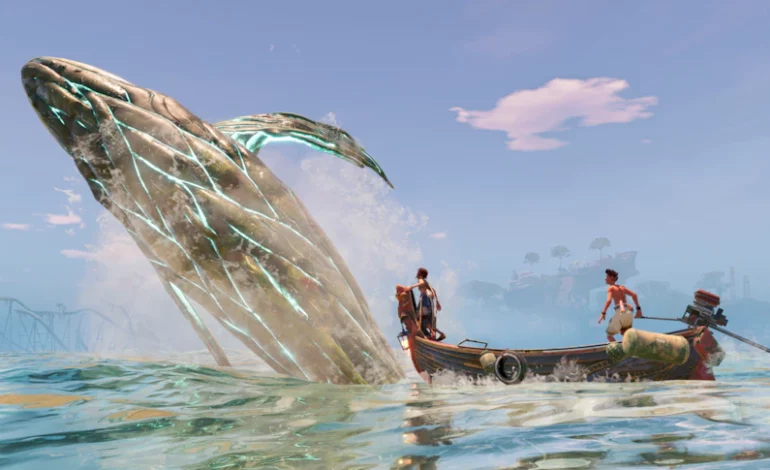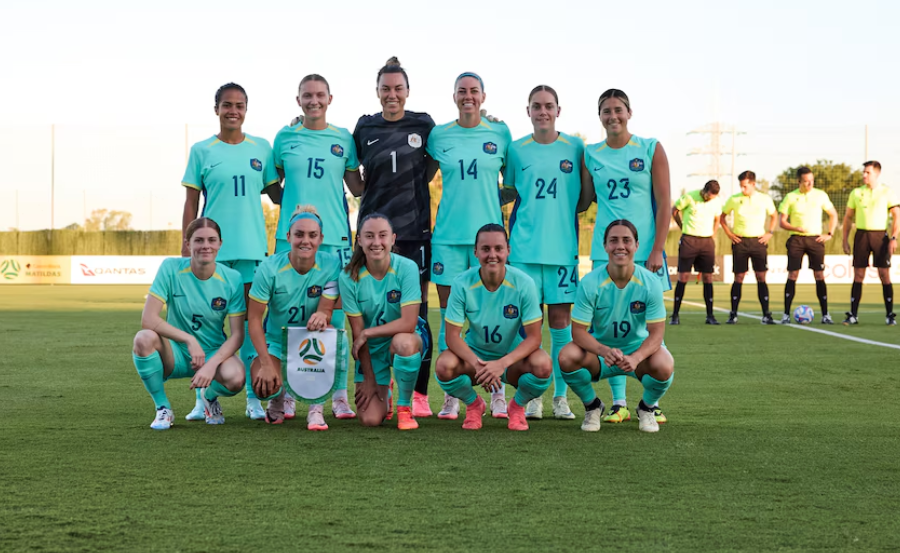Australian video game developers have had a tough year. It might get worse before it gets better

When US mega-festival SXSW rolled into Sydney this past October, the second floor of a inner-city hotel transformed into an impromptu arcade.
Inside, a glimpse of gaming’s future. An eclectic array of yet-to-be-released games lined the walls: a deer chased through a dark forest; Winnie the Pooh becomes infected with a virus; a shelter cat contemplates its bond with a new owner.
It was the finale of an unofficial, month-long celebration of the Australian game industry that kicked off at Melbourne International Games Week a month prior.
And in 2023, there has been plenty to celebrate.
For instance, Stray Gods, by Melbourne’s Summerfall Studios, was nominated for a Grammy Award. PlaySide Studios ascended to online juggernaut status thanks to the success of its ‘Dumb Ways to Die’ TikTok trend. Word game Gubbins attracted global attention, toppling New York Times on the iPhone charts – if only briefly.
But behind the success, there’s been a growing unease; an acknowledgement many Australian games studios might be approaching breaking point. Industry experts point out how, as the economic conditions have deteriorated and interest rates have increased, publishers and investors have tightened their purse strings.
Instead of growing, studios have had to downsize. League of Geeks, a highly celebrated independent Melbourne developer, laid off half its staff in November as potential investors took money off the table.
Studios the ABC spoke to said this has really shaken the local industry — if such a massive, celebrated studio is finding it hard, what of the smaller developers and indies? Some of those have endured redundancies, too, pausing development on IP and turning to work-for-hire contracts.
“It’s the worst year I can imagine since I started doing this,” said Sanatana Mishra, a game designer at Brisbane’s Witch Beam studios.
“It’s just ruthless this year.”
And it may get worse before it gets better.
Even with bumper revenues and a new government tax offset injecting cash into studios, a phrase is being uttered at industry events and gatherings that reflects another tough year ahead: Survive until ’25.
A no good year for game development
To get the full picture, we have to go back to December 2019.
In China, a highly contagious virus had begun circulating. Within months, much of the world was forced into lockdown. Everyone bunkered down indoors.
The video game industry was primed to take advantage of the situation because remote work and international collaboration were already commonplace.
And it did. The industry boomed in 2020, as people stuck indoors looked for ways to occupy their time. Games were being bought and played – and talked about. And investors, wanting to cash in on the boom, took bets on smaller studios and teams hoping to uncover big hits with big money-making potential.
Flush with cash, many studios were able to scale up. Statistics from the peak industry body in Australia, the Interactive Games and Entertainment Association (IGEA), show that full-time employees in the games industry increased 63 per cent, from 1327 in June 2020 – 2021 to 2104 for the same period in 2021–22 — the largest single-year increase since the survey began in 2016.
In addition, IGEA’s data suggested developers were hoping to hire over 300 new employees in the next year.
“Companies over-hired and over-invested on the basis that the growth that happened during COVID was going to be sustainable, and was ‘the new normal’,” suggested Katie Roots, marketing manager at Melbourne studio Hipster Whale.
It was not to be. 2023 has seen a correction, of sorts, with the industry laying off thousands of staff. Developers cite the war in Ukraine, a weak Australian dollar and the rise in interest rates as a reason for the contraction of the industry this year.
Some unofficial estimates suggest more than 7,000 workers have been laid off across the world. In Australia, the number is likely in the mid-hundreds, but Brendan Keogh, a digital games researcher at the Queensland University of Technology, said official figures were hard to come by.
“There’s all sorts of much quieter lay-offs, studios just kind of disappearing without anyone really knowing about them,” Dr Keogh said.
For those that manage to stave off the end, they may have to change tact entirely.
Survival mode
Ed Orman has been in the Australian game development scene for more than 15 years. He’s seen it during its best — and worst — times.
Mr Orman was employed by 2K Australia, a subsidiary of global gaming powerhouse Take-Two Interactive. The Australian studio became famous for helping develop big budget titles in popular franchises like XCOM, Borderlands and Bioshock.
In 2011, he left 2K to form an independent studio in Canberra, Uppercut Games. At the time, Australian game development appeared to be on the brink of collapse. High profile studios were closing and smaller, work-for-hire outfits had all but disappeared.
Uppercut started out making mobile games, Orman says, before shifting to premium console games about four years in.
Over the past few years, it’s been working on a new title, demoing it for publishers and hoping to strike up a deal. Orman says it was attracting “a huge amount of interest” at trade shows, like the Game Developers Conference in San Francisco.
“We had four or five really solid opportunities,” he said.
But the tide turned quickly.
“In the space of two weeks, all of them disappeared at the same time, for differing reasons.”
The funding would have kept the studio healthy for another three years but it wasn’t to be. To stay afloat, Uppercut went through a round of redundancies this past June, the team shrinking from about 40 people to just 16.
The studio has been able to re-hire some of those staff on contracts, but it’s put its passion project to the side, returning to work-for-hire contracts to get by. Orman calls it “survival mode.”
“We didn’t have a choice,” he said.
Stable foundations
In 2023, Amanda Schofield’s game development house, Studio Drydock, had an entirely different experience.
“For us, it’s been really stable,” Ms Schofield said.
In 2019, just before the pandemic hit, Ms Schofield and a colleague at Melbourne mobile developer Firemonkeys, Alex Holkner, co-founded Studio Drydock. What seemed, initially, like an inopportune time to build something new turned out to be fortuitous.
As work from home became the norm, the studio found remote work was an advantage. It didn’t have the brick and mortar costs of leases and overheads for a work space. And it provided access to freelancers and contractors from across the world – people already working from home.
“We were seeing some of the best talent we’ve ever worked with in the industry,” Ms Schofield said.
The studio’s first title, Wylde Flowers, was released in early 2022 on Apple’s gaming subscription service, Apple Arcade. It went on to win Apple Arcade’s game of the year and has been steadily growing its community since release. The support from Apple, and critical acclaim, helped Studio Drydock build a solid foundation for 2023, cushioning it against the worst of the economic downturn.
The studio doesn’t plan to grow its headcount in 2024 but a job opening it had earlier in the year provided some insight into how crowded the job market has become in the wake of global lay-offs. In just five days, the position had 1100 applicants, which Ms Schofield said was unprecedented.
She said it’s heartbreaking to see friends and former colleagues suddenly out looking for work. She hadn’t heard the ‘Survive until ’25’ phrase, but suspected that continued high interest rates could prevent a rapid turnaround over the next year.
“It might be a slow road to recovery.”
The past informs the future
Game developers remember the rapid studio closures, extreme job losses and talent drain that occurred following the global financial crisis of 2008.
“It’s like this real defining moment of Australian game development,” Dr Keogh said.
By the early 2010s, video game development in Australia was almost entirely obliterated.
Back then, game development was centred around large studios, employing hundreds of staff. There were multiple international corporations, like 2K Australia, that set up offices Down Under — largely because of the cheap labour. The GFC put an end to that.
The current economic conditions are reminiscent of those periods but Jeffrey Brand, a professor at Bond University in media research, believes this time around, Australia is in a better position.
“I don’t expect the industry in Australia to struggle in the way it did during the GFC.”
Professor Brand points to the size of the industry and consumer base as a bulwark against collapse, in addition to the agility and creativity of Australian studios. In video game parlance, the industry has levelled up.
He also points to renewed government support at both a federal and state level that can help studios cover growing wages in ways that might otherwise be impossible. For instance, the Digital Games Tax Offset, introduced in July 2022, provides mid- to large-sized studios an opportunity to recoup 30 per cent of costs, he says.
For Goldie Bartlett, art director at Melbourne studio Ghost Pattern, smaller support opportunities are just as important. She points to the Originate fund by Victorian development agency VicScreen as one example — and how it’s focused on supporting emerging voices and projects in the space.
“That’s a super unique fund,” she said.
“It’s going to help university graduates and first timers, and even established people … develop their prototypes.”
Weathering the storm
What the industry will look like by the end of 2024 is uncertain, but there are already signs of change.
Ms Roots was one of the thousands in the game industry that experienced a redundancy this year. She was fortunate to quickly find her next role but she suggests that, with the rise of generative artificial intelligence in game space — especially operations and marketing — others may come back to an entirely different industry.
“When it comes to the rehiring, I think there’ll be many roles that change,” Ms Roots said.
And, similarly to the post-GFC crash, some developers may not return to the industry at all.
Ms Bartlett said uncertainty around investment and having to chase commercial success can be stressful. As her studio begins looking for funding on its next game project, she’s even considered pivoting away from the industry altogether.
“I’m not feeling particularly hopeful based on what I’m hearing about how investment is going for everybody else,” she said.
While Ms Bartlett jokes she has “Survive until ’25” tattooed on her inner lip, it’s a mantra that she and many other developers are taking seriously.
So how might studios weather the storm? Ms Bartlett says this period might be a good time to do some soul searching. But most importantly, she says, developers need to support each other.
“I think the main thing that leads to a healthy, successful industry is taking interest in other people’s work and what new voices have to say,” she said.
SOURCE: ABCNEWS





